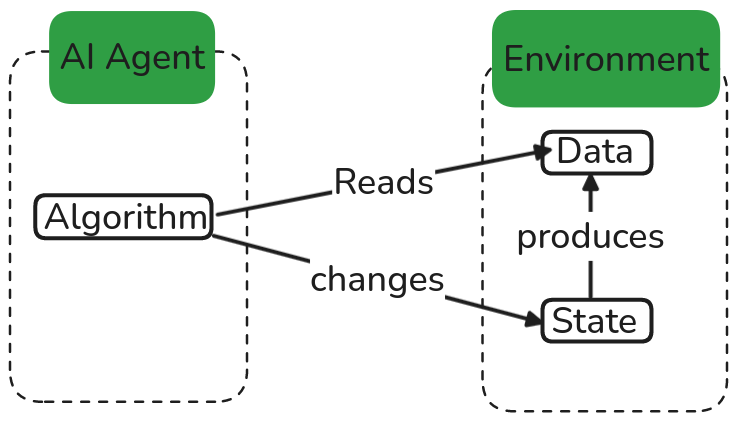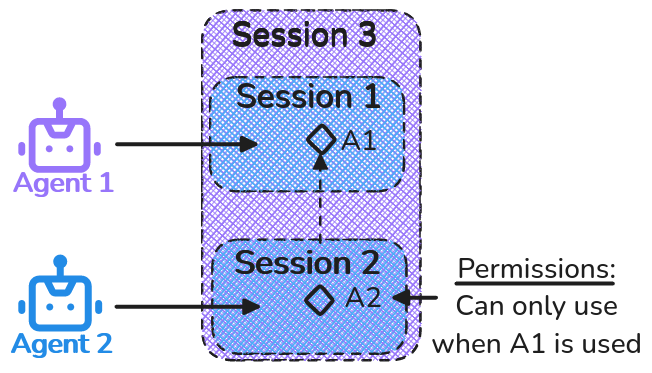How is Functor enabling the on-chain autonomous world?
The on-chain autonomous world refers to the future in which AI agents automatize complex data-hungry processes on-chain in a secure and verifiably way; which has the obstacles described on the previous section.
At a high level, all an AI-agent is doing is:
- Reading some data
- Acting on a system, changing its state
- New data is produced from changed state

All of this with some objective, sometimes as simple as buying a token at some price (need to act only once) or to maintain a portfolio in optimum market performance (which needs an ongoing agent, reading new data constantly).
The critical piece in this process is when AI agent changes the state of the blockchain.
Issue (1) of "scheduling and automatizing transactions" safely requires AI agents to have, not full permissions over a wallet, but only granular, temporary permissions. This is achieved through session keys, which:
- Gives the AI agent a signing key to produce transactions.
- Gives the blockchain a configuration to cryptographically verify transactions attempted by the AI over our assets. Solving here issue (2) of "AI's hallucinations", through active on-chain verification.
This configuration file must be cross-chain in order to also solve issue (3) of "Fragmentation in Web3". Functor, as a Keystore rollup, allows these configurations to be readable in a chain-agnostic way.
An example of how AI agents work with Functor sesions is as follows:

A user or dApp can configure any agent with as much permissions as they want, during some timeframe. This AI agent will then only act as described, becoming predictable for the user, dApp and — critically — other AI agents too.
AI agents being predictable, and also variably so, for other AI agents allow them to collaborate in a safe manner; making them composable. Consider the following example:

To assets, A1 and A2, are being used by independent AI agents, possibly on different chains, and reading different data they don't need to be sharing.
A third session configurating the relationship between A1 and A2 is created. This will make it so A2 can't be used until A1 is moved first, making it possible to force a sequential constraint over AI actions without the need of cross-chain communication.